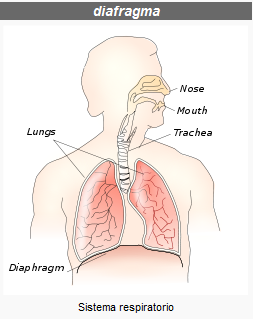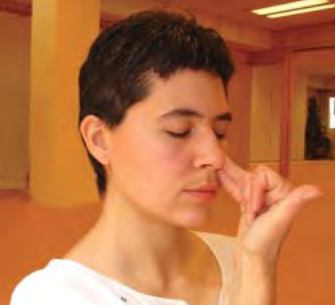The Yoga It is a discipline originally from India with which it is intended to achieve a physical, mental and spiritual balance through meditation. Has numerous benefits for the body and mind.
Breathing plays a very important role as in any other system of meditation. There are the following 3 types of breathing in the practice of Yoga.
1) Complete Yogic Breathing.

The practice of complete yogic breathing consists of retraining the organism and adapting ourselves to a new way of breathing where we include all the lung capacity. For it we divide the body into 3 zones:
a) The abdominal regionPlacing the hand below the navel we feel it. We take a deep breath. We notice how the abdomen expands and sinks when we exhale. We need to notice a slight movement of the hand.
We move on to the next phase once we have mastered this exercise.
b) The diaphragmatic region, It is the one above the navel, on the ribs. We put our hand on our stomach and take a breath. We feel how the hand moves. In this exercise you should avoid moving your abdomen or clavicles.
c) The pectoral or clavicular region. We place our hands on the chest and breathe in, feeling the clavicles rise, exhale. We prevent the abdomen or diaphragm from moving.
To train the complete yogic breathing it is necessary train each region separately involved in respiration. Once you have mastered these 3 types of breathing you can proceed to a full and fluid breath. For this you can place one hand on the abdomen and the other on the clavicular or diaphragmatic region, depending on where you are most comfortable.
We take air at the abdominal level. You retain and we continue taking air at the diaphragmatic level to continue later with the clavicular region. Remember that In Yoga all the air is inhaled through the nose and exhaled through the nose as well.
It is important that in time you go spacing the time between one inhalation and another to get better benefits from this type of breathing.
2) Viloma anuloma.
Anuloma Viloma breathing is also called "alternate nasal breathing."
Cleanses and strengthens the lungs and respiratory system. This exercise also balances the two hemispheres of your brain.
To practice this exercise, first fold the index and middle fingers of your right hand. Next, close the right nostril with your thumb and exhale completely through the left nostril. Then inhale completely through the left nostril, keeping the right nostril closed. You must breathe for a count of four.
Next, close the left nostril with the ring and index fingers of your right hand, releasing the thumb from your right nostril. Exhale through the right nostril. With the left nostril closed, inhale through the right nostril. This completes a round. You can do five to seven rounds of Anuloma Viloma.
3) Kapalabhathi.
Kapalabhati is a breathing exercise that cleanses the nasal passage, lungs, and respiratory system. Helps strengthen the lungs and stomach muscles.
For this last type of breathing I will use this video that explains it very well:


Can you tell me some places where I can take this type of breathing class in the Federal District now Mexico city, I appreciate it